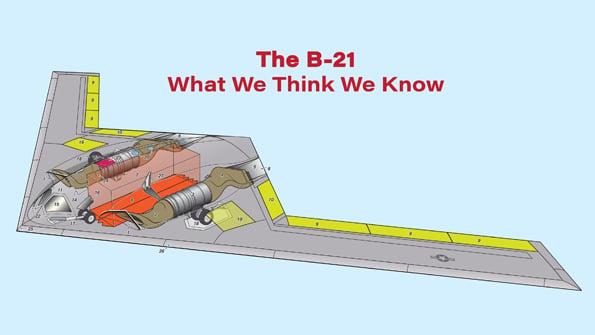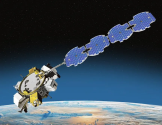At least he's realistic about the growing imbalance between the US and China. Too bad he's a Zionist lunatic.
You are using an out of date browser. It may not display this or other websites correctly.
You should upgrade or use an alternative browser.
You should upgrade or use an alternative browser.
US Military News, Reports, Data, etc.
- Thread starter tphuang
- Start date
It doesn't really matter what anyone says or does. It matters what the redhead decides.At least he's realistic about the growing imbalance between the US and China. Too bad he's a Zionist lunatic.
Nah it matters.It doesn't really matter what anyone says or does. It matters what the redhead decides.
They can fuckup things, and then trump might fire them afterwards, but that would be after the damage is done.
Say, they could provoke a 4th Taiwan strait crisis (which they didn't expect happening), or 'worse'.
The US Navy defeated a complex attack launched by the Houthis on Monday that saw the rebels fire several missiles and drones at two American warships off the coast of Yemen, a Pentagon spokesperson said on Tuesday.
The destroyers USS Stockdale and USS Spruance came under fire as they were transiting the Bab al-Mandab Strait, a strategic maritime choke point between the Red Sea and the Gulf of Aden.
The Navy repelled multiple involving at least three anti-ship cruise missiles, five anti-ship ballistic missiles, and eight one-way attack drones, the Pentagon press secretary, Air Force Maj. Gen. Pat Ryder, told reporters at a press briefing Tuesday.
Ryder said that the attacks were "successfully engaged and defeated" and that "the vessels were not damaged; no personnel were hurt."
Earlier, the Houthis said they attacked the aircraft carrier USS Abraham Lincoln in the Arabian Sea and two unnamed American destroyers in the Red Sea. The Iran-backed rebels said they achieved their objectives.
His announcement came several hours after US Central Command published footage showing fighter jets taking off from the Lincoln to "support operations" against the Houthis. It wasn't immediately clear whether that footage was related to the Monday attack on the destroyers or earlier US military action against the rebels.
Ryder also shared that US forces carried out precision airstrikes against multiple Houthi weapons storage facilities in Yemen over the weekend. He said the operation involved F-35 stealth aircraft, which were seen in Centcom's footage.
The attack against the destroyers on Monday marks the latest Houthi attack on Navy warships off the coast of Yemen. In late September, US forces missile and drone assault.
Monday's engagement came against the backdrop of a similar interaction that occurred between American forces and other Iranian groups in Syria over the past few days.
On Sunday, US personnel at Mission Support Site Green Village in northeast Syria came under two separate attacks involving a drone and indirect rocket fire, Ryder said. In response to the attacks, American forces carried out airstrikes the next day against nine targets in two locations linked to Iranian groups.
Combat debut for F-35C?
I don't know if this was posted before, but Aviation Week did a good overview of the B-21 Raider a year ago. The article contains an interactive cutaway with speculation on locations of specific components as well as speculated stats of the B-21.



The following year, the Air Force proposed a different approach to the mission, which Pentagon leadership found acceptable: a Long-Range Strike family of systems including classified uncrewed aircraft systems for ISR and electronic attack (the former becoming the Northrop Grumman RQ-180), a replacement cruise missile (now the Raytheon AGM-181) and the Long-Range Strike-Bomber (LRS-B), for which a contract was awarded to Northrop Grumman in October 2015.
Aside from scrubbed and scaled-back requirements, the LRS-B project differed from NGB in three ways: Unit cost was a key performance parameter; two competing teams were funded through preliminary design review, which normally takes place after contract award; and management was assigned to the Air Force’s Rapid Capabilities Office (RCO). The RCO modeled its approach on the Lockheed F-117, developed using mature subsystems in a new platform so that the program could focus on applying new technology.

The center-body section matches images of highly serpentine inlets mated to a medium-bypass engine. Pratt & Whitney discussed such an engine, the PW9000, as a future bomber powerplant in 2010 but has not mentioned it since. The PW9000 used the core of the PW1000G commercial engine family, mated to a direct-drive fan with a 4:1 bypass ratio. On the B-2, the low-bypass GE F118 engine was selected because it was too risky to place a higher-bypass engine, more sensitive to flow distortion, behind the curved and RAM-treated inlet ducts needed to hide the fan face from radar. With the aid of better CFD, that problem can be eliminated: Northrop Grumman proposed a large bomber UAV in 2005, powered by two modified GE CF34 turbofans, and Lockheed Martin flew the Polecat demonstrator in 2006 with two Williams FJ44s.
On November 13, 2024, the USS Virginia, became entangled in the nets of the 10m fishing vessel Øygutt near Tromsø, Norway. The sub's propeller caught the nets, dragging them for approximately two nautical miles before they were cut loose. Captain Harald Engen and his crew were unaware of the situation until the Coast Guard contacted them via VHF radio. The fishermen had been hunting for halibut when they unexpectedly snagged the sub.
Lockheed has delivered 60 F-35s in the last three months. If they can keep that pace up, they in theory can deliver 240 (20 aircraft per month) aircraft per year. They are currently predicting 156+ aircraft next year after lifting this years estimated delivers to 90 - 110 aircraft. To meet that they will need to deliver 15 to 23 aircraft per month between now and December 31st.
You do know that they are delivering aircraft which had been piling up because the DoD refused to accept nerfed aircraft with the missing Block 4 software right? Until the DoD decided to lower their own standards to get what are essentially glorified training aircraft.
The whole thing is a travesty. Worst of all is that I keep hearing that it is not just the software which has issues with this Block 4 iteration.
The whole thing is a travesty. Worst of all is that I keep hearing that it is not just the software which has issues with this Block 4 iteration.

